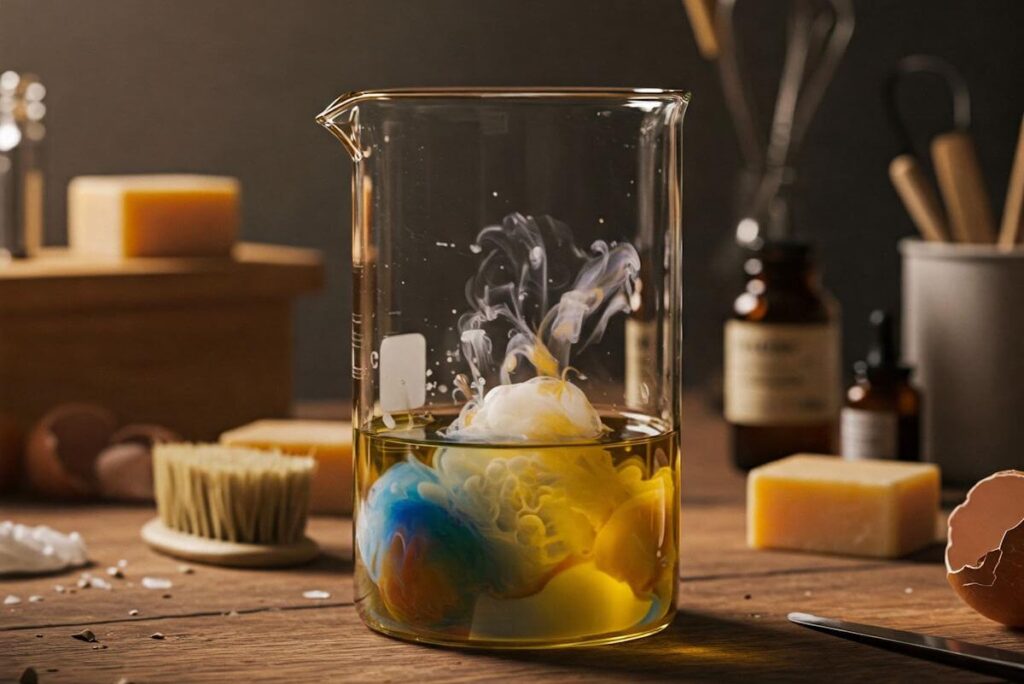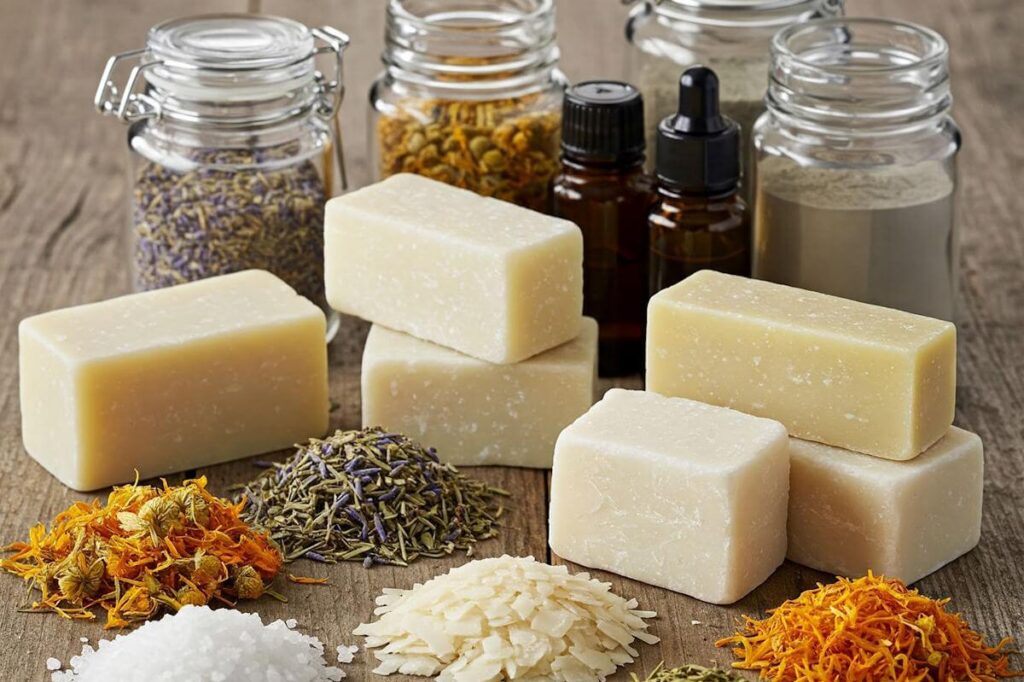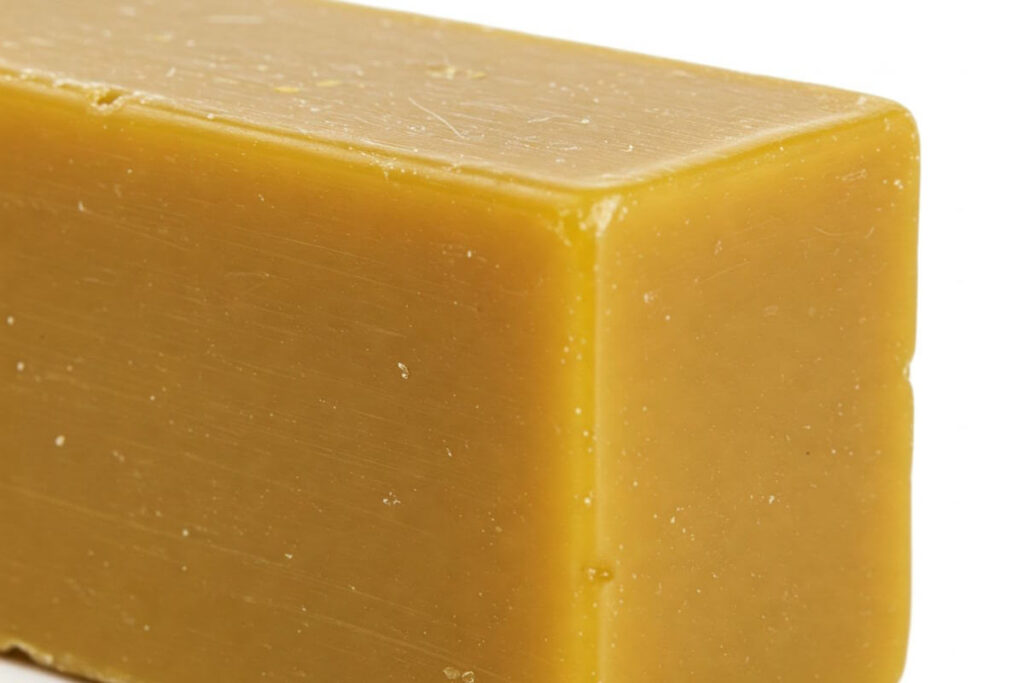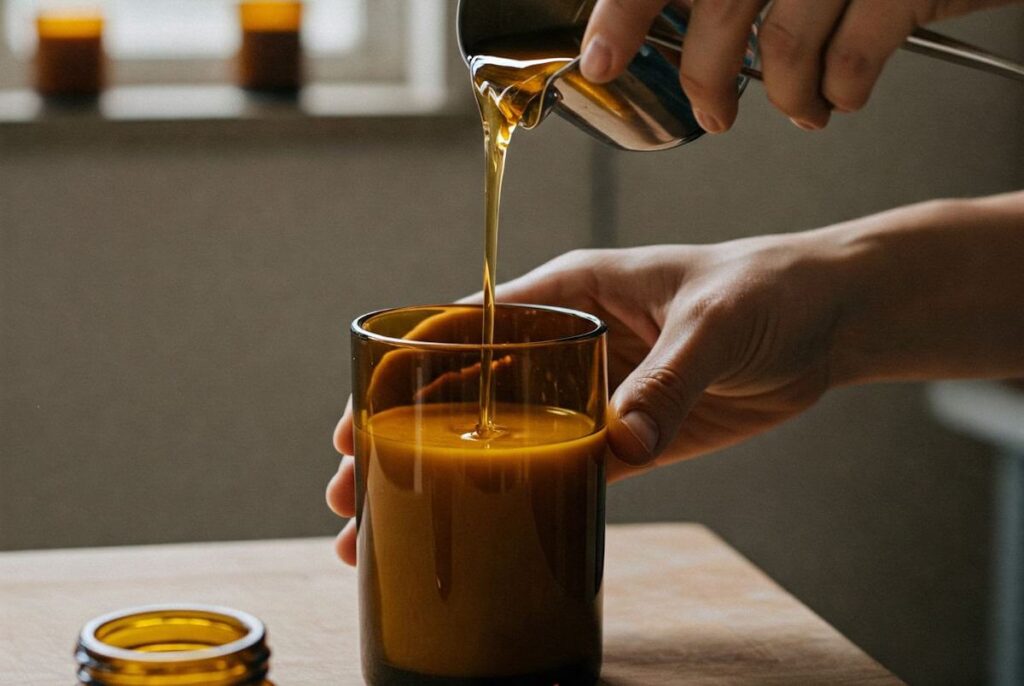Soap making is both an art and a science, deeply rooted in human history. The practice of creating soap dates back thousands of years, with its origins linked to ancient civilizations that recognized its cleansing properties. Historically, soap was crafted from animal fats and vegetable oils combined with alkaline substances, primarily ashes. As societies evolved, so did the methods and materials used in the soap-making process, leading to a significant resurgence in recent years, where enthusiasts and artisans appreciate the craft’s complexity and creativity.
In modern times, several widely recognized techniques exist for producing soap, each offering unique benefits and challenges. The cold process method is perhaps the most traditional approach, allowing for complete control over ingredients and the opportunity for natural additives, such as essential oils and herbal infusions. This technique involves mixing lye with oils at room temperature, initiating a saponification reaction that results in soap once the mixture has cured over several weeks. The cold process method appeals to those seeking a handcrafted, artisanal product.
Another popular technique is hot process soap making, which involves heating the soap mixture to accelerate the saponification process. This method allows for a quicker turnaround time, as the soap can be used within hours rather than weeks. Hot process soap often has a more rustic appearance, which many consumers find appealing. Moreover, the melt-and-pour approach provides a simpler alternative, where pre-made soap bases are melted and combined with fragrances, colors, and additives, allowing beginners to create customized soaps with minimal risk and equipment.
Understanding these methods not only highlights the artistry behind soap making but also lays the groundwork for exploring the scientific principles that govern the reaction of fats and lye. This interconnection between creativity and chemistry is what makes the craft of soap making so intriguing.
The Chemistry of Saponification
Saponification is a fundamental chemical reaction in the process of soap making, where triglycerides, the fats or oils used, react with an alkali to produce soap and glycerin. This reaction can be described as a hydrolysis reaction, where the triglycerides break down into fatty acids and glycerol. The alkali, often sodium hydroxide (lye) or potassium hydroxide, serves as a strong base that facilitates this breakdown.
During saponification, the fatty acids undergo a chemical transformation. Each triglyceride molecule is composed of three fatty acids linked to a glycerol backbone. When the triglyceride reacts with the alkali, the bonds between glycerol and the fatty acids are cleaved, allowing the alkali to neutralize the acids, resulting in soap molecules formed through the creation of long-chain fatty acid salts. The molar ratio of alkali to fat is critical; typically, a ratio of 1:2 is employed to ensure complete saponification, with allowances made for water content and other factors affecting the composition of the final product.
Different types of oils and alkalis can produce varying properties in the resulting soaps. For instance, coconut oil and olive oil each contribute distinct characteristics to the soap; coconut oil tends to create a harder, more cleansing bar, while olive oil imparts moisturizing properties and a gentler finish. The choice of alkali may also affect the soap’s hardness, lathering ability, and conditioning properties. Thus, understanding the scientific principles underlying the saponification process is essential for soap makers who wish to tailor their products to specific qualities. Not only does chemistry dictate the reaction itself, but it also influences the overall performance of the soap, making it critical for crafting effective and desirable soap bars.
Understanding Oils and Fats
In soap making, oils and fats play a pivotal role as they are the primary ingredients that undergo a saponification process with lye. Different oils possess unique fatty acid profiles, which significantly influence the final product’s characteristics, including lather, moisturization, and stability. Understanding these properties is essential for aspiring soap makers seeking to create high-quality bars.
One of the most commonly used oils in soap production is olive oil, renowned for its exceptional moisturizing qualities. Rich in oleic acid, olive oil contributes to a stable lather and nourishing properties. However, it typically produces a softer soap, which may require additional hard oils or fats for balance.
Coconut oil is another popular choice, primarily due to its superior lathering abilities. This oil consists of a high percentage of saturated fats, resulting in a hard bar with an abundant, fluffy lather. While coconut oil provides excellent cleansing properties, its high cleansing factors can make the soap overly drying if used in excess. Thus, it is often blended with other oils like olive or palm oil to maintain a delicate balance.
Palm oil is frequently utilized to enhance the hardness and stability of soap bars. As a versatile fat, it complements other oils well while aiding in producing a creamy lather. However, due consideration should be given to sourcing sustainably produced palm oil to mitigate environmental concerns associated with its cultivation.
Jojoba oil, while slightly more expensive, offers exceptional conditioning properties due to its unique structure that closely mimics the natural oils of the skin. Its incorporation in small amounts can elevate the skin benefits of soap, though it is not a primary oil due to its price tag.
Ultimately, the choice of oils and fats is integral to soap making, and it is vital to consider their respective properties when formulating recipes. Selecting the right combination can elevate the quality and performance of homemade soaps, ensuring a favorable outcome for the user.
The Role of Lye in Soap Production
Lye, which is composed of sodium hydroxide (NaOH) or potassium hydroxide (KOH), is an essential ingredient in the soap-making process. It plays a critical role in the saponification reaction, where fatty acids from oils and fats react with lye to produce soap. The effectiveness of lye in this transformation is attributed to its strong alkaline properties, which enable the breakdown of triglycerides in fats, resulting in the formation of soap molecules and glycerin.
Handling lye requires caution due to its caustic nature. When mixed with water, lye generates significant heat and can cause burns if it comes into contact with skin. Therefore, it is crucial for soap makers to wear appropriate safety gear, such as gloves, goggles, and protective clothing, while preparing and mixing lye. Proper ventilation in the workspace is also necessary to avoid inhaling any fumes produced during the mixing process. Understanding the risks associated with lye underscores the importance of safety protocols when engaging in soap production.
Accurate measurements are paramount when working with lye, as an incorrect ratio can lead to subpar soap quality or adverse reactions. Each type of fat or oil has a specific saponification value, which determines the amount of lye required for the reaction. By calculating this value precisely, soap makers can ensure that all lye is consumed in the reaction, resulting in a mild and effective soap. It is essential to utilize a reliable digital scale for weighing ingredients and to follow a trusted soap recipe to maintain the integrity of the final product.
In summary, lye is a vital component in the soap-making process. By safely handling it and accurately measuring its proportions, one can transform ordinary oils into luxurious bars of soap through the fascinating chemistry of saponification.
Additives and Their Functions
In the realm of soap making, an array of additives serves both functional and aesthetic purposes, transforming basic soap bars into products that cater to various consumer preferences. Additives such as colorants, fragrances, essential oils, and exfoliants significantly contribute to the overall appeal and effectiveness of soap.
Colorants are among the most visually impactful additives in soap formulation. They can be derived from both natural and synthetic sources. Natural colorants, including clays and plant-based dyes, are popular for those seeking organic products. Meanwhile, synthetic dyes offer a broader spectrum of vibrant hues. These colorants interact with the soap matrix, resulting in visually appealing bars that attract consumers while maintaining safety standards in personal care products.
Fragrances and essential oils are crucial for enhancing the sensory experience of using soap. Fragrances can be synthetic or derived from natural sources, providing an array of scent profiles. Essential oils, on the other hand, offer both aromatic benefits and therapeutic properties, appealing to the wellness-conscious demographic. The incorporation of these aromatic additives not only enriches the user experience but also plays a role in the chemical interactions that can influence the soap’s texture and lathering capabilities.
Exfoliants, such as crushed seeds, oatmeal, or salt, serve to enhance the physical texture of soap. These additives provide gentle scrubbing power, offering added benefits in terms of skin care. The presence of exfoliants can change the soap’s feel and lather, giving users a more tactile experience during use. Understanding how these various additives work in concert within the soap formulation allows artisans and manufacturers to create bars that are not only visually appealing but also effective and enjoyable for the user.
The Importance of pH Levels
The pH level of soap is a critical factor in ensuring both its safety and effectiveness. In essence, pH measures the acidity or alkalinity of a substance, and for soap, maintaining a proper balance is pivotal. The ideal pH range for most soaps is between 7 and 10, with an optimal level typically around 9 for cleansing effectiveness while remaining gentle on the skin. This range is particularly favorable because it aligns closely with the skin’s natural pH, which hovers around 5.5, thus reducing the risk of irritation.
Testing pH levels during the soap making process is essential to guarantee that the final product is safe for use. This is usually accomplished using pH strips or digital pH meters, both of which provide rapid and reliable results. A pH test can be performed after the saponification process is complete. If the pH falls outside the desired range, adjustments can be made using additives like citric acid to lower the pH or sodium bicarbonate to raise it. This flexibility allows soap makers to tailor the product to the specific needs of different skin types.
For individuals with sensitive skin, a lower pH soap can be beneficial as it is more compatible with the skin’s natural acid mantle. Conversely, for oily skin types, a slightly higher pH may aid in thorough cleansing and removing excess oils. Understanding these nuances in pH levels can significantly enhance the performance of the soap, leading to greater user satisfaction. In conclusion, achieving the proper pH balance is not only essential for the soap’s effectiveness but also plays a vital role in maintaining the skin’s health and hydration. Careful monitoring and adjustment of pH levels is thus an indispensable part of the soap making process.
Curing and Aging Soap Bars
Curing and aging are essential processes in the soap-making journey that significantly influence the quality, texture, and scent of the final product. Once the saponification process is complete, which involves the chemical reaction between fats and lye, the soap must undergo curing for a specified period. This step allows residual water to evaporate and promotes the hardening of the soap bars, resulting in a more robust and long-lasting product. Typically, the curing process lasts from four to six weeks, although some soap makers may choose to prolong this timeframe for optimal results.
During curing, various chemical changes continue to take place. The soap’s pH level gradually stabilizes, ensuring that it becomes gentler on the skin. As excess water evaporates, the soap’s hardness increases, enhancing its longevity when used. This evaporation also contributes to the soap’s mildness, which is particularly valuable for those with sensitive skin. Moreover, the scent of the soap evolves during this time. Essential oils and fragrance additives may initially seem overpowering; however, as the bars cure, these scents mellow, creating a more balanced aromatic profile.
Time is a crucial element in developing the ideal characteristics of soap. The aging process not only refines the scent but also influences the texture and lather quality. A well-cured soap bar will typically produce a rich, creamy lather, enhancing the user’s bathing experience. Patience is vital in soap making, as rushing the curing phase can lead to inferior products that may not perform as desired. By allowing the soap to cure properly, soap makers can ensure that their bars not only meet aesthetic standards but also provide effective cleansing and moisturizing properties.
Troubleshooting Common Soap Making Problems
Soap making is as much an art as it is a science, and novice and experienced soap makers alike occasionally encounter difficulties. Understanding the chemistry behind soap making is essential to identify and rectify common problems, ensuring the desired results are achieved.
One frequent issue is separation, where the oils and lye do not emulsify correctly. This can occur due to excessive mixing or due to the oils used. To prevent this problem, ensure that your oils are heated to a consistent temperature before adding the lye solution. Additionally, using stick blenders can help achieve a stable emulsion, but care must be taken not to over-mix as this may lead to separation.
Another common hurdle is lye-heavy soap, which occurs when there is an excess of lye that hasn’t reacted with the oils. This can be hazardous and result in an unpleasant product. To avoid this, it is crucial to follow precise measurements using a reliable lye calculator. Conducting a superfatting process — intentionally leaving some unreacted oils in the soap — can also enhance safety and improve the soap’s moisturizing properties.
The lack of lather is another concern frequently reported by soap makers. This issue can arise from an imbalanced formulation of oils or using oils that do not contribute to lathering, such as olive oil. To enhance lather, incorporate oils such as coconut or palm oil, which are known for their lathering abilities. Additionally, refining your technique regarding mixing can improve lather production.
In conclusion, troubleshooting common soap making problems requires both understanding the chemistry behind the process and adherence to best practices. By being mindful of the factors that influence soap quality, such as proper measurements and ingredient selection, soap makers can create perfect bars that meet their expectations.
Conclusion: The Art and Science of Soap Making
The intricate process of soap making seamlessly blends art and science, demonstrating how chemistry underpins the creation of high-quality soaps. Throughout this exploration, we have examined the fundamental chemical reactions involved, particularly saponification, where fats or oils react with an alkali to produce soap and glycerin. This process not only forms the core of soap production but also reveals how different ingredients can alter the properties and characteristics of the final product.
We have also discussed how the selection of fats and oils, along with the precise measurements of lye and water, influence factors such as lathering ability, moisturizing qualities, and fragrance retention. The chemical structure of these components plays a crucial role in achieving a balance between effectiveness and skin-friendly attributes, highlighting the importance of understanding the science involved.
Furthermore, various additives such as essential oils, natural colorants, and exfoliants can enhance both the aesthetic appeal and functional characteristics of soap. By applying chemical principles, soap makers can experiment with diverse formulations to create unique artisanal products that cater to a wide range of preferences. This interplay of creativity and scientific knowledge opens doors to endless possibilities in crafting bespoke bars of soap.
In light of the information presented, it is encouraging for readers to engage in their own soap-making adventures. Armed with an understanding of the underlying chemistry, individuals can explore a myriad of formulations and techniques that reflect their personal tastes and values. By merging scientific rigor with artistic expression, the realm of soap making becomes not just a craft but a platform for personal innovation and exploration.




